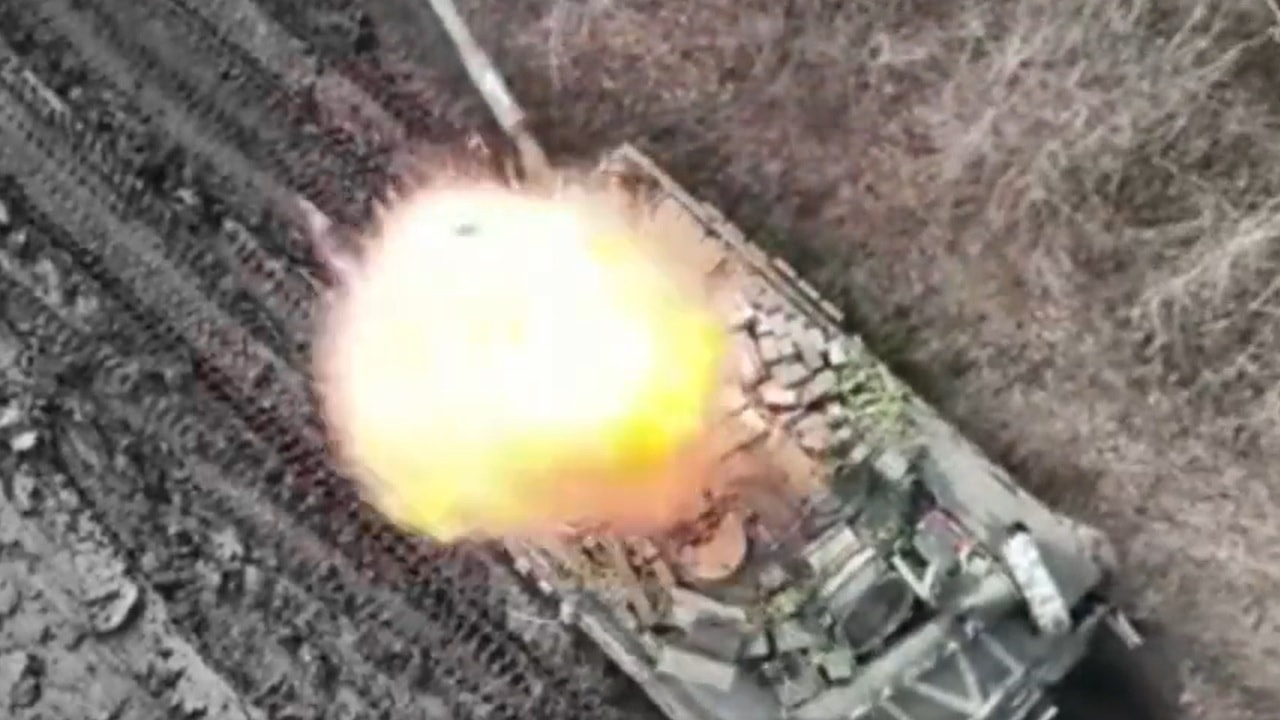Video footage shared by the Ukrainian military in recent days shows the moment Ukrainian forces destroyed a moving Russian tank using drone-corrected artillery fire.
The remarkable footage, recorded from a Ukrainian drone, shows the Russian tank, a T-80BV, moving quickly along a rural road in Klishchiivka, Donetsk oblast.
The tank moves at speed to escape enemy fire.
As the tank moves along, several shells strike the ground.
The Russian tank operator weaves in and out of the road, but one Ukrainian shell eventually strikes the vehicle.
The impact appeared to do major damage to the tank, leaving it immobilized and burning in the middle of the road.
The clip was reposted on Twitter by the popular war-tracking Twitter account Ukraine Weapons Tracker.
“Ukrainian drone-corrected artillery pursued and eventually destroyed a moving Russian T-80BV tank in Klishchiivka, #Donetsk Oblast,” the account writes.
The T-80BV tank seen in the video is an upgraded version of the T-80, a Soviet-era tank that has been in service since 1976.
How Drone-Corrected Artillery Fire Works
Drones have played an important role throughout the Russian invasion of Ukraine.
Not only do they provide both sides with an easy way to deliver lethal strikes without risking personnel, but they also make artillery strikes more accurate and lethal.
Since the early days of the conflict, Ukrainian forces have used drones to adjust artillery fire, making it easier to strike targets. Each time an artillery round is fired, there is what we call a circular error probable (CEP), an accounting of the weapon’s precision that is measured in tens of meters.
The CEP refers to the circular space in which the shell is likely to land, and the size of this area determines the probability that the artillery shell will hit its target.
The smaller the CEP, the higher the chance that the target will be struck within one or a handful of strikes.
Drone-adjusted fire requires a shell to first be fired at a target. A drone then uses its cameras to identify where the shell landed, and the operators of the weapon can adjust their fire to ensure that the CEP is as small as possible.
In many instances, drone-adjusted fire allows soldiers to strike their intended target with just one try.
#Ukraine: Ukrainian drone-corrected artillery pursued and eventually destroyed a moving Russian T-80BV tank in Klishchiivka, #Donetsk Oblast. pic.twitter.com/tJxVGgElxe
— ???????? Ukraine Weapons Tracker (@UAWeapons) May 14, 2023
Jack Buckby is 19FortyFive’s Breaking News Editor. He is a British author, counter-extremism researcher, and journalist based in New York. Reporting on the U.K., Europe, and the U.S., he works to analyze and understand left-wing and right-wing radicalization, and reports on Western governments’ approaches to the pressing issues of today. His books and research papers explore these themes and propose pragmatic solutions to our increasingly polarized society.

